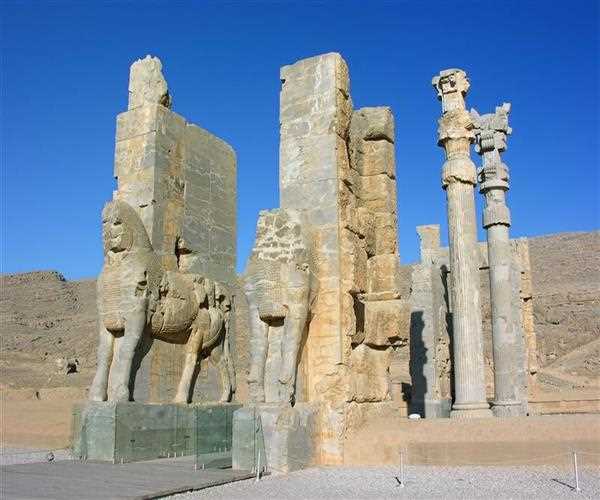
16-Jun-2022
How did Iran become a Muslim country?
In 650 AD, Islam was brought to Iran by Arab-Islamic invasion, and it has since played a fluctuating, peculiar position in this nation-state. In this Muslim country, the concepts of nationalism, secularism, religion, and revolution are all unique. Unlike many of their neighbours, Iranians are highly proud of their pre-Islamic traditions and achievements; nationalistic emotions can be found throughout Iranian history and in current discussions.
The Muslim invasion of Persia in 633–654 CE resulted in the Islamization of Iran.
It took a long time for Islam to be embraced by the bulk of the population since it was first denied. Iranians have kept several pre-Islamic traditions alive, such as their language and culture, while adapting them to Islamic law. The 'Iranian Islamic' identity was formed by combining these two practises and traditions.
The late-twentieth-century Islamic revival tendency developed the belief that 'resurrected' Muslim nations were Islamic governments. The territory referred to be the Muslim world is undeniably made up of countries with overwhelmingly Muslim populations. The definition and notion of an Islamic state have long been a point of contention.
The Islamic Republic of Iran, or jomhoury-e eslami-e iran, henceforth referred to as Iran, is the only Muslim nation that has implemented Islamic ideas into the political arena through a popular revolution. The official name of the country encapsulates the contradiction of the matter, as it encompasses both the concept of an Islamic state and the concept of a contemporary Republic. Determining if this heterogeneity has resulted in an un-Islamic system is one of this writer's aims.
The 1979 Iranian Revolution, which brought Islam into the political arena, was a model of complexity, marked by relative peacefulness, an exiled leader, and an unprecedented governing platform.
The Arab invasion of Iran signalled a rupture with the past that impacted not only Iran but Western Asia as a whole, resulting in the absorption of peoples who created and revitalised Muslim culture. Medina, the Prophet Muhammad's adoptive city, and Mecca, his birthplace, had become the epicentres of an Arabian movement that Muslim Arabs expanded into a global movement via the conquest of Iranian and Byzantine lands.
Within a year of Muhammad's death in 632, Arabia had stabilised sufficiently for his secular successor, Abu Bakr, the first caliph, to launch an offensive against the Byzantine and Sassanid Empires.
In 635, Abu Bakr destroyed the Byzantine army in Damascus and then set on to conquer Iran. The Arab armies conquered the Sassanid capital of Ctesiphon (which they called Madain) in 637, and the Sassanid army was beaten in Nahavand in 641-42. After then, Iran was vulnerable to invaders. The Sassanids' material and social bankruptcy facilitated the Islamic victory, and the native inhabitants had nothing to lose by working with the conquering authority. Furthermore, Muslims showed religious tolerance and treated people fairly when they accepted Islamic authority without protest. However, Iran's resistance did not die out until approximately the year 650. Conversion to Islam, which provided some benefits, was relatively quick among the urban people but took longer among the peasantry and dihqans. It was not until the ninth century that the majority of Iranians converted to Islam.
Between 611 and his death in 632, the prophet Muhammad received a series of revelations (which became known as the Qur'an) that declared Islam. He was born in Mecca, in western Arabia, and the first Muslims were Arabs. Following Muhammad's death, the Arabs proceeded on conquests, at least in part motivated by faith. They overcame the Sasanids and took Ctesiphon, the capital, in 636. In 651, the last monarch of the Sasanid dynasty died as a refugee in eastern Iran.
Over the course of three centuries, the majority of Iranians converted to Islam. The early generations of Iranian Muslims adopted the Arab invaders' culture and did not write in their original tongue. However, starting about 800, an increasing number of Iranians began to write an Iranian language developed from the Sasanid period's Middle Persian languages. This language is officially known as New Persian or Farsi, however, it is most often referred to as Persian. It is written in Arabic script and has a significant number of Arabic borrowed words.
Many Iranians, including some of the greatest authors and philosophers in the history of Arabic letters, such as Ibn Sina and al Ghazali, continued to write Arabic.
New Persian literature frequently represented an Iranian cultural legacy that had survived the country's loss of independence and unity. Firdausi completed the Shahnama, an epic poem that tells the stories of Iran's fabled pre-Achaemenid rulers as well as real shahs, approximately 1000. It drew on pre-Islamic poetry elements that had been preserved in both written and oral form.
Most Iranian cities were minor before the Arab invasions. Iranian nobility lived on country estates and accumulated money through land and treasure. The nature of the country altered dramatically in the ninth and tenth centuries as a result of tremendous urbanisation. Nishapur, Rayy, Isfahan, and Shiraz are just a few of the cities that emerged. They became dynastic industrial and cultural hubs.
A recirculation of money from the ousted nobility and centralization of tax collection in Arab-chosen administrative centres, as well as a flow of converts to Islam from rural or peripheral areas, all contributed to this urbanisation. The new towns were largely Muslim, and Iran became one of the most powerful centres of Muslim intellectual endeavour.
During the Safavid dynasty, Iran turned nearly totally to Shi'ism. Iran, surrounded by hostile Sunni governments, developed a national political identity that almost embodied Shi'ism. The time in Islamic intellectual history was marked by outstanding Shi'ite thinkers and theologians.

Student
current post-graduate student at christ university and an aspiring content writer with experience in working on online content creation and research..
Join Our Newsletter
Subscribe to our newsletter to receive emails about new views posts, releases and updates.
Copyright 2010 - 2025 MindStick Software Pvt. Ltd. All Rights Reserved Privacy Policy | Terms & Conditions | Cookie Policy